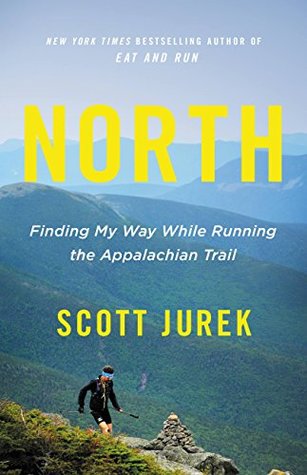More on this book
Community
Kindle Notes & Highlights
There was some truth to those armchair critics’ comments; this was slightly out of his wheelhouse. But let’s be honest—he had a pretty decent résumé.
Would he have understood if I’d told him that, though man’s soul finds solace in natural beauty, it is forged in the fire of pain?
That’s the interesting thing about Runner’s Knee (or Patellofemoral Pain Syndrome, as it is more formally known among medical professionals)—it can often feel better if you’re moving, as long as the stress to the cartilage on the underside of the kneecap is minimized.
I knew that adversity bred transformation, that there would be an enlightening ease at the other end of this struggle.
If I was going to complete the AT, record-setting or relaxed, I was going to hike the entire AT. No shortcuts, even if it was only a hundred feet. That kind of austerity was important to Horty and fundamental to the ultrarunning ethos. Honor and integrity were everything.
And in the case of pain, perhaps the one we know hurts us less than the one we fear.
I thought about that Roosevelt quote printed on my 1999 Western States race guide: “It is not the critic who counts; not the man who points out how the strong man stumbles…. The credit belongs to the man who is actually in the arena, whose face is marred by dust and sweat and blood; who strives valiantly…who at the best knows in the end the triumph of high achievement, and who at the worst, if he fails, at least fails while daring greatly, so that his place shall never be with those cold and timid souls who neither know victory nor defeat.”
Connecticut and Massachusetts would each take a day. It was Vermont, New Hampshire, and then Maine that had humbled many a thru-hiker. They were the undisputed crux of the entire AT.
Years ago, he had introduced me to the Japanese philosophy of Bushido, or the “way of the warrior,” which stressed honor, simplicity, and courage. There are echoes of its lessons in the stoicism of Marcus Aurelius, especially in the tenet that has most influenced me: The mind of a warrior (or anyone performing a difficult task) should be so attuned to the moment that thoughts and emotions do not impede proper action. A mind in this condition is thought to function so optimally that the right decisions come naturally and pain and fear disappear.
We started day thirty-two running through the Sages Ravine in Massachusetts. It was a magical section of trail—pristine, verdant, and prehistoric. The trail lies deep in a quiet gully shaded by an old forest, and it’s lined with glaciated boulders that have been sanded smooth by millions of years of ice, wind, and water.
He was especially fond of the Shackleton quote “I love the fight and when things are easy I hate it.”
Thru-hikers call the state Vermud and it’s a joke among locals up there that there are four seasons in Vermont: mud, mud, mud, and mud.
For 105 miles, it runs with the Long Trail, which was created well before the AT, back in 1910, by men with handsaws, axes, and shovels. It took twenty years to finish the 272-mile footpath, which stretches from Vermont’s southern border all the way to Canada, and it was the first major recreational trail in America. So it had vintage charm and storied mystique. It was also kind of like one long, sludge-filled wheel rut.
The vinegar scent was a byproduct of metabolizing amino acids and the protein in my muscles; I was literally cannibalizing myself. Even though I was eating upwards of seven thousand calories a day and plenty of carbohydrates, I was dangerously tapping into my essential reserves.
We often think we can’t go any farther and feel like we have nothing left to give, yet there is a hidden potential and strength in all of us, begging us to find it. We arrive at it via different means—sometimes reward, sometimes fear. There was something to Horty’s motivational theory, and finding that desire was the most vexing problem. How bad did I want it?
Sure enough, almost on cue, I sank deep into some hidden mud. That was the whole Appalachian Trail in a nutshell. Just when you think you have the rhythm, it cuts you off at the knees.
At the entrance of the Hundred-Mile Wilderness stood a sign that read CAUTION. THERE ARE NO PLACES TO OBTAIN SUPPLIES OR GET HELP UNTIL ABOL BRIDGE, 100 MILES NORTH. DO NOT ATTEMPT THIS SECTION UNLESS YOU HAVE A MINIMUM OF 10 DAYS SUPPLIES AND ARE FULLY EQUIPPED. THIS IS THE LONGEST WILDERNESS SECTION OF THE ENTIRE “AT” AND ITS DIFFICULTY SHOULD NOT BE UNDERESTIMATED. GOOD HIKING!
Out there in the wild, on a long journey, you hike your own hike, blaze your own trail, and only you can find what you’re looking for.
At a point when I was struggling with this project, a musician friend told me, “You have your whole life to write your first album and then you’re expected to write the second one in six months.”


